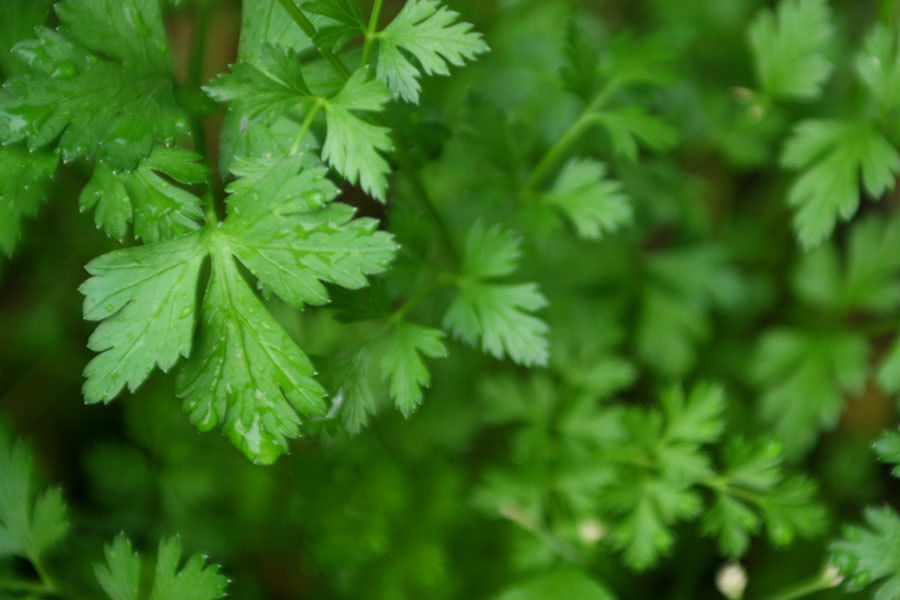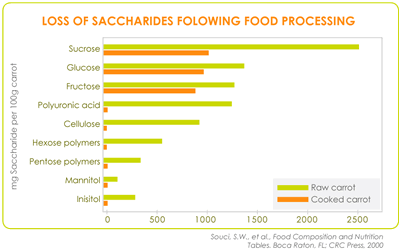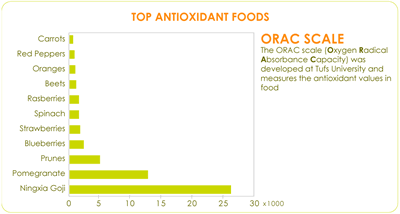

Every cell in our body needs Glyconutrients
IWe gain our main source of nutrition from the foods that we eat in our daily diets. From that we don’t get the amount of glyconutrients that we need to stay healthy. Unhealthy nutrition can lead to an unhealthy you.
Why are our diets deficient in glyconutrients? The so-called fresh fruits and vegetables we buy today have few glyconutrients (or nutritional value at all) because they are often grown in nutrient-deficient soil, picked before they ripen naturally, gassed, irradiated, artificially ripened, stored for days, weeks, or months, cooked, frozen, canned, processed, refined, pasteurised, genetically engineered, etc. Cooking and processing deplete glyconutrients further.
If we are deficient in the 8 essential sugars, our body cells will eventually lack the communication system necessary to maintain good health.
Raw food health
Raw food health is believed by many to be the ideal. Our bodies are designed to process the food raw. When we cook the food we eat, many important nutrients get destroyed and some nutrients even get changed into harmful chemicals.
This allows the body to deal with the toxins from the cooked food and allows a minimal build up of toxins in the body. (As fast as they come in, your body can take them out)
Raw food contains enzymes, which are believed to react with other enzymes in our bodies to aid in digestion.
A bacterium on raw food boosts our immune system and populates our digestive tract with good flora. This then results in optimal absorption of the good stuff in our food.
What does glyconutrients to do with raw food health?
Glyconutrients are 8 essential sugars, which coat the surface of every cell in the human body. Without these sugars our body cannot communicate.
Raw, Living food is what we were designed to eat.
Raw food health consists of uncooked fruits, vegetables, nuts, seeds and sprouted grains. Included in this are other foods such as seaweeds, raw carob powder, cold pressed olive oil, and certain spices and seasonings.
The 8 essential glyconutrients are found in plants that we eat as well as plants that are not common in our diet, such as aloe vera.
These nutrients go further than just raw food. The food must be vine ripened and consumed very soon after leaving the plant. For example, the glyconutrients in an aloe leaf are no longer present within 2 - 4 hours after cutting off the leaf.
So if you're looking to get the right nutrients in the raw food, you have to eat it from the garden or find some other way of supplementing.
Glycobiology has also found that beneficial bacteria in the colon break down polysaccharides to monosaccharides (glyconutrients). But the bacterial content of modern people is different from our ancestors and so this process is less efficient.
Green harvesting allows long distance transport and allows fruit and vegetables to be stored for lengthy periods, but most of the essential glyconutrients are found only in food that is ripened on the vine/tree and they remain in the fruit or vegetable for only 48 hours after picking.
Consider the carrot:
Green harvesting loses up to 25% of its nutrients
Transporting loses up to 25% of its remaining nutrients
Storage loses up to 50% of its remaining nutrients
Canning loses up to 83% of its remaining nutrients
Cooking loses up to 50% of its remaining nutrients.
This leaves the carrot with 2.39% of it original nutrient content.

At the same time that our food has been reducing in nutrients, autoimmune diseases, cardiovascular disease, cancer, diabetes and chronic degenerative disease have been increasing alarmingly started to occur in younger age groups. A growing mountain of evidence seems to show that these diseases are mostly caused by a dietary deficiency: One of them being glyconutrients that are missing from our diet. A dietary deficiency cannot be corrected with drugs or anything else, other than the missing nutrients.
Toxins, Free Radicals and Antioxidants
We all live in a toxic environment. No matter where we live or how careful we are, we can't avoid environmental toxins. They are in the air we breathe, the food we eat and the water we drink all over the planet. What are particularly worrying are the high levels of pesticides in our homes, considerably higher to levels we are exposed to outdoors.
Free radicals are produced when our cells create energy and when we are exposed to pollutants or toxins such as cigarette smoke, alcohol or pesticides. If allowed to go unquenched, free radicals can cause damage to the body's cells. The cells that line the arteries, the fat cells in the blood, the immune cells and so on can all be affected by free radicals. And because of this, free radical damage (or oxidation) has been linked to the formation of every degenerative disease known including cancer, cardiovascular disease, cataracts and the ageing process itself.
Free radicals are unstable chemicals formed in the body during normal metabolism or exposure to environmental toxins such as air, food and water pollution. Free radicals help our bodies to generate energy and fight infections, but when we have too many free radicals they attack healthy cells causing them to age prematurely. The action of rust is probably the best analogy of how excess free radicals work in our body.

We are being constantly exposed to increasing amounts of free radicals due to increasing environmental toxins in our living and working environment. At the same time our intake of protective cell pigments is decreasing. Free radicals are known to cause or exacerbate most (and especially chronic) diseases such as cancer, heart disease, arthritis, diabetes, macular degeneration and cataracts.
Free radical damage mutates the body's future DNA and RNA cell blueprint message by pairing with electrons in the DNA chains, ultimately leading to cellular electronic imbalance. Inevitable blurring of the DNA and RNA blueprint will occur as mutated cells replicate this is aging. In other cases, excess free radical damage can cause DNA messages to accelerate the cell division process into a state of panic whereby DNA are unable to withstand the rate of degeneration - this is cancer.
Antioxidants are substances or nutrients in our food, which can prevent or slow the oxidative damage to our body. Phytonutrients act as antioxidants, which help form, the body's defence against free radical damage to cells.
Antioxidants act as free radical scavengers and prevent and repair damage done by the free radicals
The focus on wellness means a focus on supporting the body in its amazing ability to heal, repair, regenerate, regulate and protect itself. Engaging in a healthy lifestyle does this, which includes ensuring that our body has ample quantities of the essential nutrients. This means ensuring we include in our diet the essential amino acids (proteins), essential fatty acids (omega 3, 6 and 9), essential carbohydrates (8 essential glyconutrients), phytosterols, antioxidants, enzymes, fiber and vitamins and minerals. We also need to have adequate clean water, exercise and low levels of stress.
Who needs glyconutrients?
Whether we are suffering from a medical condition or not, our bodies need glyconutrients to function.
From the scientific research results it is clear that if our body is suffering from an auto-immune disorder or degenerative condition it can benefit from glyconutrients, notably the eight essential glyconutrients. These glyconutrients help our body to exercise its incredible ability to heal, repair, regenerate, regulate and protect itself just by giving it the raw materials it is already pre-programmed to use.
And the evidence also shows that by the same processes, the eight necessary glyconutrients are essential to maintaining a healthy body with optimal wellness. If we were getting the essential glyconutrients in our diet in sufficient quantities, we would not need supplementation, but unfortunately current agricultural practices, leave our foods with few of the eight essentials.
The bottom line is: If we are alive and have cells, we need the eight essential glyconutrients; mannose, galactose, glucose, fucose, xylose, N-acetylglucosamine, N-acetylgalactosamine, and N-acetylneuraminic acid.


"About 200 monosaccharides (carbohydrates) are found in nature, however only 8 are found in...
the chains of Glycoproteins"
Harper's Biochemistry (1996)